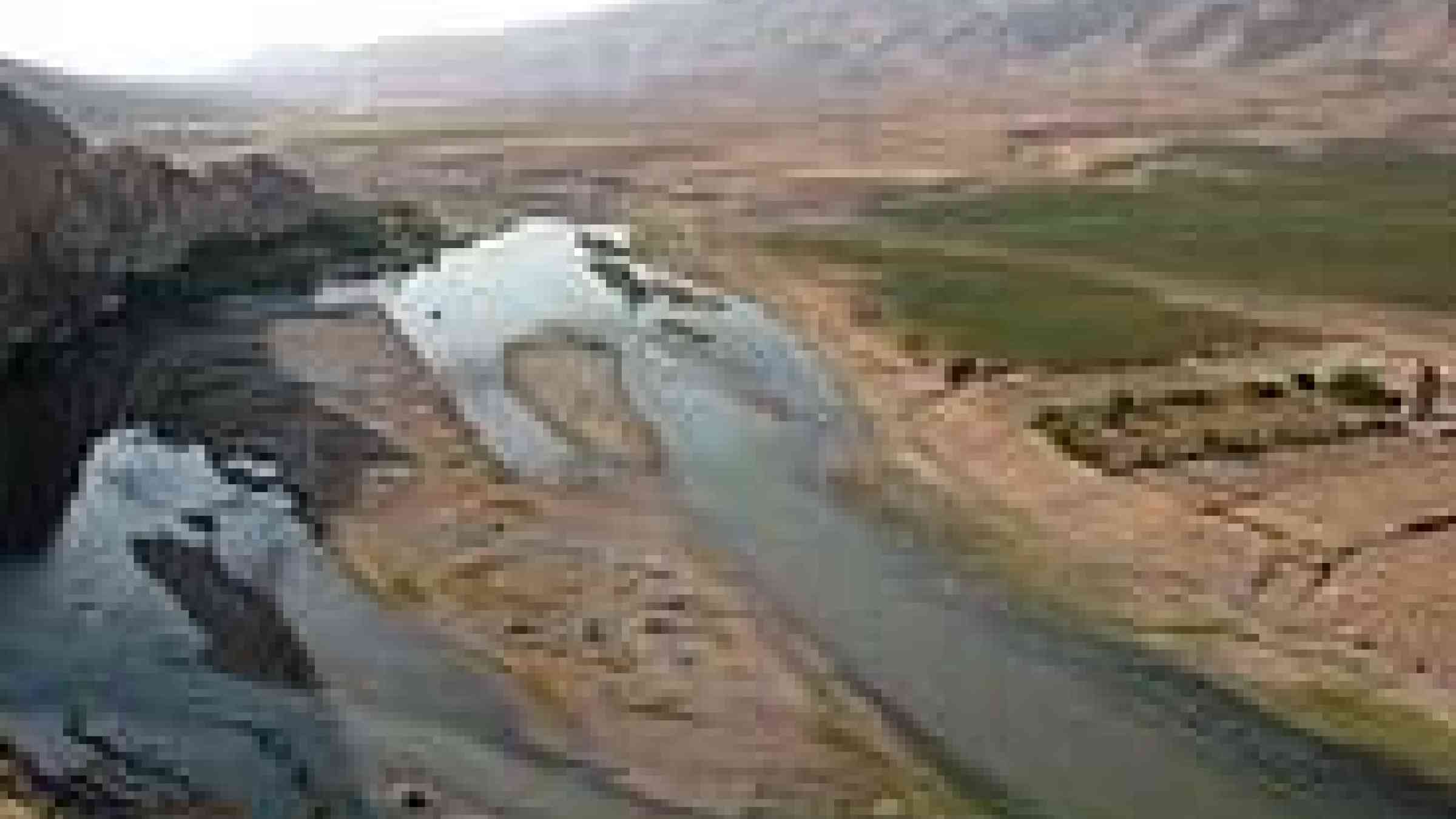Please help us improve PreventionWeb by taking this brief survey. Your input will allow us to better serve the needs of the DRR community.
NASA satellite data find freshwater losses in Middle East

by james_gordon_losangeles CC BY-NC 2.0 http://www.flickr.com/photos/james_gordon_losangeles/7417983146
Press release: 13-049
Washington -- A new study using data from a pair of gravity-measuring NASA satellites finds that large parts of the arid Middle East region lost freshwater reserves rapidly during the past decade.
Scientists at the University of California at Irvine (UC Irvine); NASA's Goddard Space Flight Center in Greenbelt, Md.; and the National Center for Atmospheric Research in Boulder, Colo., found during a seven-year period beginning in 2003, parts of Turkey, Syria, Iraq and Iran along the Tigris and Euphrates river basins lost 117 million acre feet (144 cubic kilometers) of its total stored freshwater. That is almost the amount of water in the Dead Sea. The researchers attribute about 60 percent of the loss to pumping of groundwater from underground reservoirs.
The findings, to be published Friday, Feb. 15, in the journal Water Resources Research, are the result of one of the first comprehensive hydrological assessments of the entire Tigris-Euphrates-Western Iran region. Because obtaining ground-based data in the area is difficult, satellite data, such as that from NASA's twin Gravity Recovery and Climate Experiment (GRACE) satellites, are essential. GRACE is providing a global picture of water storage trends and is invaluable when hydrologic observations are not routinely collected or shared beyond political boundaries.
"GRACE data show an alarming rate of decrease in total water storage in the Tigris and Euphrates river basins, which currently have the second fastest rate of groundwater storage loss on Earth, after ndia," said Jay Famiglietti, principle investigator of the study and a hydrologist and professor at UC Irvine. "The rate was especially striking after the 2007 drought. Meanwhile, demand for freshwater continues to rise, and the region does not coordinate its water management because of different interpretations of international laws."
Famiglietti said GRACE is like having a giant scale in the sky. Within a given region, rising or falling water reserves alter Earth's mass, influencing how strong the local gravitational attraction is. By periodically measuring gravity regionally, GRACE tells us how much each region's water storage changes over time.
"GRACE really is the only way we can estimate groundwater storage changes from space right now," Famiglietti said.
The team calculated about one-fifth of the observed water losses resulted from soil drying up and snowpack shrinking, partly in response to the 2007 drought. Loss of surface water from lakes and reservoirs accounted for about another fifth of the losses. The majority of the water lost -- approximately 73 million acre feet (90 cubic kilometers) -- was due to reductions in groundwater.
"That's enough water to meet the needs of tens of millions to more than a hundred million people in the region each year, depending on regional water use standards and availability," said Famiglietti.
Famiglietti said when a drought reduces an available surface water supply, irrigators and other water users turn to groundwater supplies. For example, the Iraqi government drilled about 1,000 wells in response to the 2007 rought, a number that does not include the numerous private wells landowners also very likely drilled.
"Water management is a complex issue in the Middle East -- an area that already is dealing with limited water resources and competing stakeholders," said Kate Voss, lead author of the study and a water policy fellow with the University of California's Center for Hydrological Modeling in Irvine, which Famiglietti directs.
"The Middle East just does not have that much water to begin with, and it's a part of the world that will be experiencing less rainfall with climate change," said Famiglietti. "Those dry areas are getting dryer. The Middle East and the world's other arid regions need to manage available water resources as best they can."
Study co-author Matt Rodell of Goddard added it is important to remember groundwater is being extracted unsustainably in parts of the United States, as well.
"Groundwater is like your savings account," Rodell said. "It's okay to draw it down when you need it, but if it's not replenished, eventually it will be gone."
GRACE is a joint mission with the German Aerospace Center and the German Research Center for Geosciences, in partnership with the University of Texas at Austin. For more about GRACE, visit:
http://www.nasa.gov/grace
and
http://www.csr.utexas.edu/grace
Media contacts:
Steve Cole
Headquarters, Washington
202-358-0918
stephen.e.cole@nasa.gov
Alan Buis J
et Propulsion Laboratory,
Pasadena, Calif.
818-354-0474
alan.buis@jpl.nasa.gov
Janet Wilson
University of California, Irvine
949-824-3969
janethw@uci.edu
Explore further
Please note: Content is displayed as last posted by a PreventionWeb community member or editor. The views expressed therein are not necessarily those of UNDRR, PreventionWeb, or its sponsors. See our terms of use
Is this page useful?
Yes No Report an issue on this pageThank you. If you have 2 minutes, we would benefit from additional feedback (link opens in a new window).